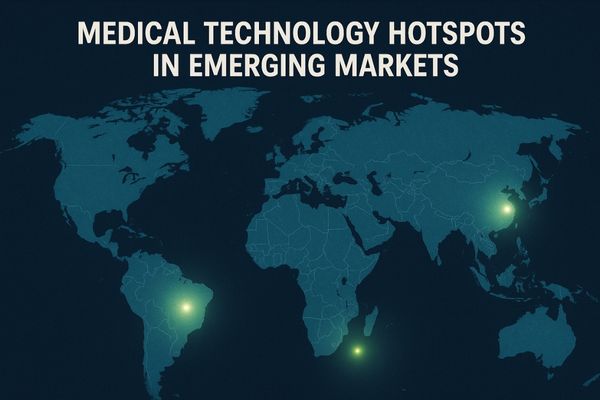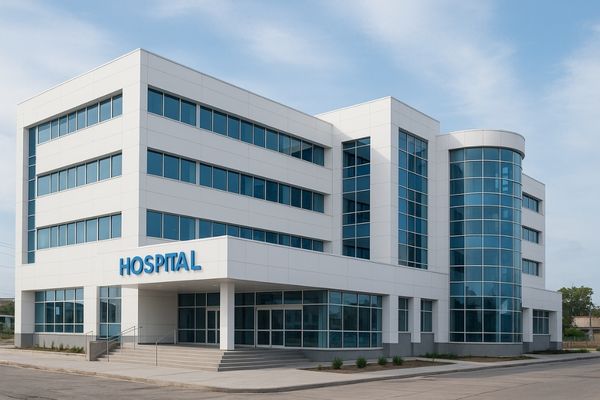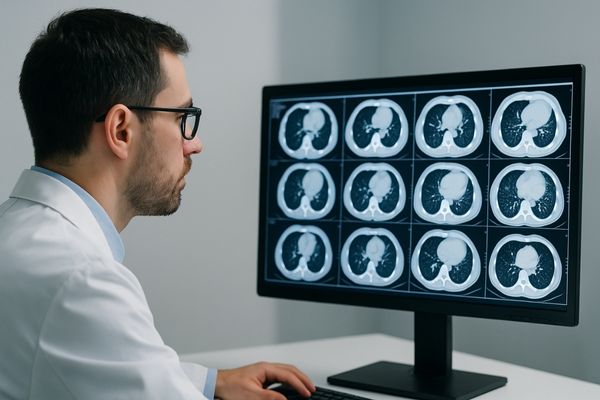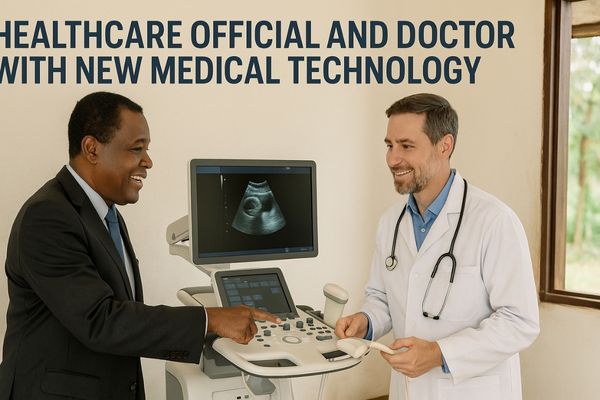Hospitals in emerging markets often rely on outdated displays, limiting diagnostic accuracy. This technology gap restricts a growing healthcare system’s potential to deliver modern care. Advanced medical displays are critical for closing this gap and improving patient outcomes.
Rapidly expanding healthcare infrastructure, rising chronic disease rates, and government reforms create vast opportunities for medical displays. Success requires balancing affordability with performance and building strong local partnerships to address unique market demands.

The global healthcare landscape is shifting. While established markets continue to evolve, the most dynamic growth is now happening in emerging economies1. These nations are making unprecedented investments in their healthcare systems, creating a significant frontier for advanced medical technology2. However, entering these markets is not a simple task. It requires a deep understanding of the unique economic, clinical, and logistical challenges involved. The path to success lies in navigating these complexities to deliver technology that is both accessible and effective. We will now explore the key factors driving this important opportunity.
Growing healthcare infrastructure in emerging markets drives demand for advanced medical displays
New hospitals are being built, but they are often equipped with consumer-grade screens. This undermines their major investment in advanced imaging scanners. Professional medical displays are essential to complete these modern health facilities.
Regions like Southeast Asia, Africa, and Latin America are heavily investing in new hospitals and clinics. This construction boom is creating a foundational demand for all types of professional medical equipment, including specialized displays.

A wave of investment is transforming healthcare infrastructure3 across Asia, Africa, and Latin America. Governments and private entities are pouring billions into building new hospitals, upgrading existing clinics, and establishing specialized diagnostic centers. This creates a massive greenfield opportunity. Unlike in mature markets where sales often involve replacing single units, these projects require equipping entire departments or facilities from scratch. This surge in demand spans the full range of medical displays, from general review screens at nursing stations to high-precision monitors in radiology suites. These new facilities need versatile, reliable, and compliant displays to form the backbone of their clinical workflow. A monitor like the MD26C is ideal for these environments, offering a flexible and high-quality solution for clinical review across various departments, ensuring that the new infrastructure delivers on its promise of better care from day one.
| Region | Key Healthcare Investment Drivers |
|---|---|
| Southeast Asia | Growing middle class, medical tourism, public health initiatives. |
| Africa | Population growth, international aid, national health insurance schemes. |
| Latin America | Modernization of aging facilities, private sector investment, focus on specialty care. |
Rising prevalence of chronic diseases increases reliance on diagnostic imaging technology
Chronic diseases are rising rapidly in emerging economies, often overwhelming healthcare systems. Diagnosis frequently comes too late for effective intervention. Advanced imaging, powered by high-quality displays, enables the early detection needed to manage these conditions.
The increase in lifestyle-related conditions like cardiovascular disease and cancer is driving greater use of diagnostic imaging. This trend necessitates displays with high resolution and contrast for accurate interpretation of complex scans.

Parallel to infrastructure growth, emerging markets are facing a critical epidemiological shift. As lifestyles change, the incidence of chronic, non-communicable diseases like cancer, diabetes, and cardiovascular conditions is soaring. This public health challenge places an enormous strain on healthcare resources and makes early and accurate diagnosis more important than ever. Consequently, there is a sharp increase in the reliance on diagnostic imaging modalities4 such as CT, MRI, and digital X-ray. A standard-definition monitor can easily obscure the subtle signs of early-stage disease presented in these scans. Clinicians need displays with high resolution and precise grayscale rendering5 to confidently identify tiny nodules, faint lesions, or minor blockages. This diagnostic clarity is essential for effective treatment planning. A display like the MD33G provides the detail and DICOM-compliant consistency radiologists require to meet this growing diagnostic burden.
Government initiatives and healthcare reforms create opportunities for medical display adoption
Many public or rural hospitals lack proper diagnostic tools because of severe funding gaps. This creates a stark disparity in the quality of care between urban and rural areas. Government reforms are now targeting these gaps, creating demand for new technologies.
National healthcare reforms, universal coverage goals, and international aid are channeling funds into technology upgrades. These programs create large-scale procurement opportunities, especially for rural and public health facilities.

Governments in many emerging nations are launching ambitious healthcare reforms aimed at achieving universal coverage6 and modernizing their public health systems. These initiatives are often supported by international aid organizations and development banks. A central focus of these programs is equipping primary and secondary care facilities, including those in remote or underserved areas, with essential medical technology. This creates large-scale tender opportunities for thousands of devices at a time. The procurement criteria for these tenders typically prioritize durability, reliability, and adherence to international standards, all within a cost-effective framework. Manufacturers who can provide robust and compliant solutions are well-positioned to succeed. For example, a tender to equip district hospitals with basic endoscopic surgery capabilities would require a monitor like the MS192SA, which offers reliable HD performance in a compact and durable package perfectly suited for these environments.
| Initiative Type | Primary Goal | Technology Focus |
|---|---|---|
| Universal Health Coverage | Expand access to essential services for all citizens. | Cost-effective, reliable diagnostic & treatment tools. |
| Hospital Modernization | Upgrade outdated public hospital infrastructure. | High-performance, compliant specialty equipment. |
| Rural Health Programs | Bridge the urban-rural healthcare quality gap. | Durable, easy-to-use, low-maintenance devices. |
Cost-sensitive markets require balancing high performance with affordability
Hospitals in developing regions need advanced medical technology but face very tight budgets. Simply choosing the cheapest option can compromise quality and patient safety. The key is to find equipment that meets critical clinical standards without breaking the bank.
Price is a major decision-making factor in these markets, but quality cannot be sacrificed. Manufacturers must engineer products that meet essential standards like DICOM while remaining financially accessible.

Affordability is arguably the single most important factor in emerging markets. Procurement managers are under immense pressure to maximize their limited budgets. However, this cost-sensitivity cannot come at the expense of patient safety or diagnostic accuracy. A medical display that is not DICOM compliant7, for instance, is clinically inadequate for reviewing radiological images, regardless of its low price. The challenge for manufacturers is to achieve a balance through smart design and value engineering. This means focusing resources on what matters most: the quality of the LCD panel, the reliability of the power supply, and compliance with essential medical standards. It may mean forgoing non-essential features like elaborate ergonomic stands or numerous input ports to keep the cost down. This "fit-for-purpose8" approach ensures the product delivers core clinical value reliably. A monitor like the MD32C exemplifies this balance, providing the high resolution needed for primary diagnosis in a cost-effective package.
Local partnerships and manufacturing localization accelerate market penetration
Entering a new global market from a distance is filled with logistical and cultural challenges. Customers often hesitate to purchase critical equipment without local support. Establishing a strong local presence is essential for building the trust needed for success.
Overcoming logistical, service, and cultural barriers is critical. Local partnerships, joint ventures, and even local assembly can build trust, improve support, speed up delivery, and accelerate market adaptation.

Success in emerging markets is impossible without a robust local strategy. Shipping products from a global headquarters is just the first step. True market penetration requires building a local ecosystem9. This begins with partnering with in-country distributors who understand the local language, culture, and complex procurement processes. It also involves establishing a local service center10 with factory-trained technicians who can provide rapid installation, maintenance, and repair, minimizing equipment downtime. For more complex equipment, local clinical application specialists are needed to provide training and support to hospital staff. Going a step further, localizing assembly can reduce import tariffs and shipping costs, making products more affordable and competitive. When installing a sophisticated device like the MS430PC, having a local team to manage installation, integration, and surgeon training is not just a benefit; it is a necessity for a successful outcome.
Brands like Reshin can leverage technology and training to establish long-term presence
Simply selling a piece of hardware is a short-sighted strategy. Without proper training and ongoing support, advanced equipment will be underutilized and fail to deliver its full value. A comprehensive approach builds lasting partnerships.
Success in emerging markets extends beyond the product itself. We must provide tailored solutions, comprehensive training for clinicians, and responsive local support to address unique market challenges and build long-term trust.

To build a sustainable presence11 in an emerging market, a company must position itself as a long-term partner, not just a one-time vendor. This means leveraging our deep technological expertise to do more than just sell a box. It involves a consultative approach, working with hospitals to understand their specific clinical needs and financial constraints to recommend the right solution. A critical component of this is education. We must invest in comprehensive training programs12 for both clinicians and biomedical engineers. This ensures that the users can leverage the full capabilities of the technology and that the local technical staff can provide effective first-line support. This commitment builds local capacity and demonstrates a genuine investment in the success of the healthcare system. When deploying a highly specialized device like the MD52G for a national breast cancer screening program, providing this level of training and support is essential for achieving the desired clinical outcomes.
Conclusion
The potential in emerging markets is immense. Success hinges on a strategic approach that balances advanced technology with affordability, all supported by a deep understanding of local clinical needs.
📩 Looking to expand into emerging markets with cost-effective yet advanced medical displays? Contact Martin at martin@reshinmonitors.com for tailored strategies and solutions from Reshin.
-
Understanding the dynamics of emerging economies can help you navigate the complexities of healthcare investments and technology. ↩
-
Exploring this link will provide insights into how cutting-edge technology is reshaping healthcare delivery in new markets. ↩
-
Explore this link to understand how healthcare infrastructure is evolving globally and the impact of investments on patient care. ↩
-
Explore this link to understand how advancements in diagnostic imaging can enhance disease detection and improve patient outcomes. ↩
-
Discover why high resolution and precise grayscale rendering are crucial for accurate diagnosis and effective treatment planning in healthcare. ↩
-
Exploring this resource will provide insights into how universal coverage can improve health outcomes and access. ↩
-
Understanding DICOM compliance is crucial for ensuring patient safety and diagnostic accuracy in medical imaging. ↩
-
Exploring the fit-for-purpose approach can reveal how to balance cost and quality in medical equipment design. ↩
-
Understanding the concept of a local ecosystem is crucial for businesses aiming to succeed in emerging markets. ↩
-
Exploring the role of local service centers can reveal strategies to enhance customer satisfaction and operational efficiency. ↩
-
Explore this link to discover effective strategies that can help your company thrive in emerging markets. ↩
-
Learn why investing in training programs is crucial for maximizing technology effectiveness and supporting healthcare professionals. ↩


